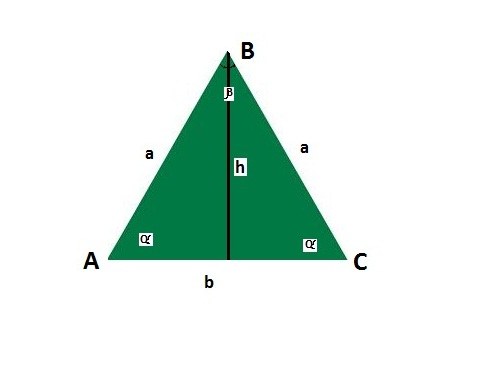You will need
- - table Bradis;
- calculator;
- - the range.
Instruction
1
Label the sides and angles of an isosceles triangle. Let the base be b, side a, the angles between the side and the base is α, the angle opposite the base β, the height h.
2
Find the lateral side using the Pythagorean theorem, which States that the square of the hypotenuse of a rectangular triangle is equal to the sum of the squares of two – s^2=a^2+b^2. If an isosceles triangle besides the basis of the known height, the properties of an isosceles triangle it is the median, and divides a geometric figure into two equal right-angled triangle.
3
Substitute into the equation the appropriate values. So, in this case to get: a^2 = (b/2)^2+h^2. Solve the equation: a = √(b/2)^2+h^2. In other words, the side equal to the square root extracted from the sum of half the base, squared, and height, which is also taken in the square.
4
If an isosceles triangle is rectangular, the angles at the base equal to 45°. Calculate the size of the sides using the theorem of sines: a/sin 45°= b/sin 90°, where b is the base, a – side, sin 90° is equal to one. The result is: a = b*sin 45°= b*√2/2. That is, the side equal to the base multiplied by the square root of two divided by two.
5
Use the theorem of sinuses, and in the case where an isosceles triangle is not rectangular. The base and surrounding to it the angle α of the side find side: a = b*sinα/sinβ. The angle β will compute using the properties of triangles, which States that the sum of all the angles of a triangle equal 180°: β = 180°- 2*α.
6
Apply the theorem of cosine, in which the squares of the sides of a triangle is equal to the sum of the squares of the other two sides minus twice the works of these sides multiplied by the cosine of the angle between them. In relation to an isosceles triangle, given the formula looks like this: a = b/2cosα.



